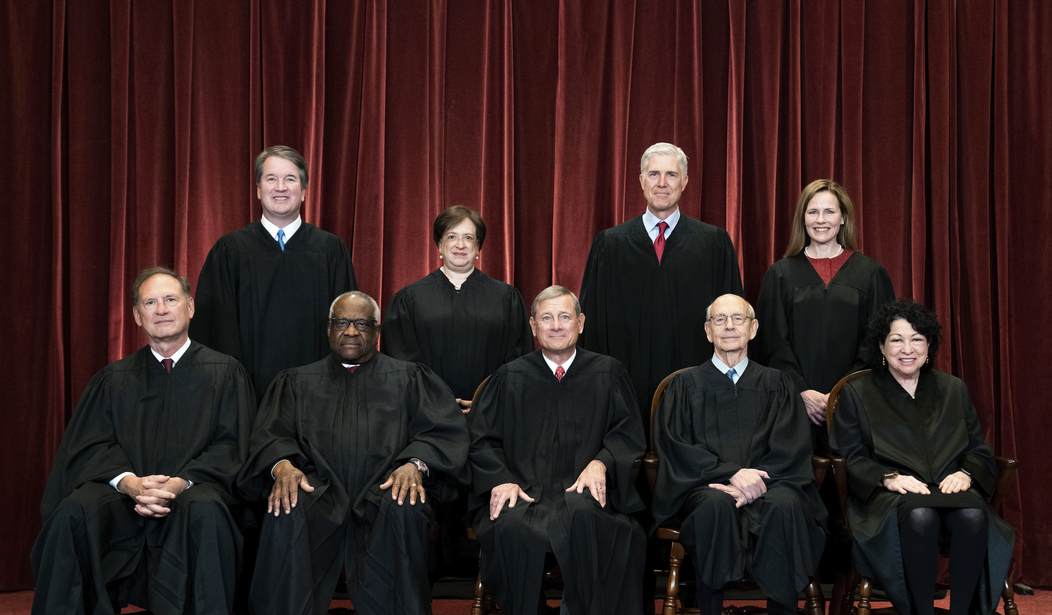The saga of the illegal renewed eviction moratorium has returned to the Supreme Court. On Friday, the D.C. Circuit Court of Appeals refused to lift the stay that has enabled the moratorium to remain in place since May, when D.C. District Court Judge Friedrich found it unlawful. The circuit court’s ruling entitles the landlords to again apply for relief in the Supreme Court and they did so the same day. Jones Day, the law firm handling the case for the landlords, anticipated the circuit would rule against them and had already prepared the papers for the Supreme Court.
It is highly likely that the Supreme Court will lift the stay, which will put an immediate stop to the moratorium. Even President Biden has acknowledged that the moratorium will likely ultimately be found unlawful by the courts, but he imposed it anyway as an exercise in political expediency — to appease the left wing of his party and buy additional time for renters. Chief Justice Roberts is giving no aid to that cynical ploy. He put the matter on a very fast track, directing the government to file its response to the application by noon today, August 23rd.
The history of this case, very briefly, is as follows — to recap for anyone not following this matter closely. In May, the D.C. district court ruled that the Centers for Disease Control and Prevention (CDC) lacks authority to impose the moratorium under the 1944 public health statute on which it purports to rely (42 U.S.C. § 264). The district court and the D.C. Circuit left the moratorium in effect while the D.C. Circuit ruled on the government’s appeal from the district court’s decision. In late June, the Supreme Court, by a vote of 5-4, also refused to lift the stay of the district court’s ruling (which left the moratorium in effect), but the full Court did not explain its reasoning. Justice Kavanaugh, however, announced that he voted to leave the moratorium standing only because it would be less disruptive to just let the moratorium end, as scheduled, on July 31. He added, however, that his legal view is that the 1944 statute does not authorize the moratorium and so a “clear and specific congressional authorization (via new legislation) would be necessary for the CDC to extend the moratorium past July 31.”
Justice Kavanaugh’s opinion was the handwriting on the wall and so the Biden administration initially decided to let the moratorium expire on July 31. When the left wing of his party could not impose a new moratorium through legislation in Congress, it vigorously complained that President Biden should do so unilaterally through the executive branch. At first, Biden took the heat and explained, correctly, that his hands were legally tied. But he soon caved to the political pressure and the CDC renewed the moratorium a few days after it expired.
The question then became how soon this cynical exercise in political expediency would be struck down by the courts and whether the courts would comment on this misuse of the judicial process. The first round of the renewed legal battle ended on Friday, August 13, when the district court concluded that, although it still found the renewed moratorium illegal and thought it should be ended at once, its “hands were tied” by the previous ruling of the higher D.C. Circuit upholding the stay. Although this ruling was unsatisfying, the district court was probably correct in its assessment of the limits on its authority.
Thus, the battle moved up to the D.C. Circuit. As I noted in my previous article, the circuit court was not bound by its previous decision and could reach a different conclusion based on the subsequent developments in the Supreme Court (as well as other circuit courts which had found, or suggested, that the moratorium was unlawful). The D.C. Circuit took briefing and decided the issue on an expedited basis last week, but it merely issued a one-paragraph, unsigned opinion concluding that, “[i]n view of [the district court’s] decision and on the record before us, we likewise deny the emergency motion directed to this court.” In a remarkable abdication of responsibility, the Court of Appeals refused to provide any reasoning for its decision.
The judges at the D.C. Circuit know full well that the Supreme Court will almost certainly not uphold the renewed moratorium because a majority of the Justices think it is unlawful, just as the other circuit courts to consider the issue do. The D. C. Circuit stands alone in claiming, preposterously, that the government is likely to succeed on the merits of the arguments. It is also apparent that the government’s appellate arguments now regarding the stay consist solely of hyper-technical claims designed simply to further drag the case out.
Yet, the Circuit obstinately clung to its previous ruling preserving the moratorium for now. But, by refusing to explain their decision, the appellate panel provided a smaller target for the Supreme Court to scorn their reasoning on review. This is essentially a profile in cowardice. It is not surprising that Judges Pillard and Brown-Jackson, both of whom are liberal Democratic nominees, signed on to this decision extending the moratorium but not bothering to explain why. Judge Rao, a conservative Trump nominee, joined them without dissent, but it may well be that she did so simply in order to expedite the matter on its path back to the Supreme Court. Had she chosen to dissent, it would not have changed the outcome, but explaining her reasoning would have taken time and may well have caused the other two judges to feel compelled to write a majority opinion also. Thus, on balance, the circuit’s “no explanation” order is probably a compromise between two judges who want to extend the stay and one who, being in the minority, wants to elevate the matter to the Supreme Court as soon as possible.
The landlord association, understandably, has pulled no punches in immediately returning to the Supreme Court for relief. They argue that; “[a]s five Members of this Court indicated less than two months ago, Congress never gave the CDC the staggering amount of power it claims … the unqualified power to take any measure imaginable to stop the spread of any communicable disease.” In discussing the equities, they note that, in the past three months since the district court’s order was originally stayed, “the government has … distribute[d] rental assistance; health care providers have administered roughly 65 million additional vaccine doses; and the total cost of the moratoria to lessors, amounting to as much as $19 billion each month, has only increased.” The landlords emphasize that, due to the government’s sovereign immunity and the judgment-proof nature of the tenants, the massive wealth transfer accomplished by the moratorium will never be fully undone.
The landlords conclude by focusing on the larger issues at play. They properly highlight that the Executive Branch is taking advantage of the inherent delay that litigating matters before the Judicial Branch entails in order to cynically buy time to achieve policy goals in a way the courts think is unlawful. They note that it took 26 days for the Supreme Court to resolve the previous appeal in June and that it has now been 17 days since the CDC decided to extend the moratorium past July 31. They warn correctly that, unless the Supreme Court promptly vacates the stay, “Congress will know that it can legislate through pressure campaigns and sit-ins rather than bicameralism and presentment, the Executive Branch will know that it can disregard the views of a majority of Justices with impunity, and this Court will know that its carefully considered rulings will be roundly ignored.” This result is far more damaging to our nation than even the staggering financial losses suffered by landlords, in truth. Hopefully, the Supreme Court – or at least some of the Justices – will speak clearly to this issue as well in the course of bringing down the curtain on the moratorium.
Doubtless, back in June, Justice Kavanaugh decided to let the moratorium continue on grounds of compassion and because he relied in good faith on the government’s representation that the moratorium was soon to expire (although his judgment was clearly mistaken in that regard). He assumed that, based on his clear signal and the dissent of four other Justices, the Legislative and Executive Branches would act responsibly by either letting the moratorium expire at the end of July, or else taking legislative action to extend it (which might itself have raised a constitutional question about Congress’ authority, but that is a separate issue). Instead, members of Congress and the President acted totally irresponsibly and took outrageous advantage of the situation, callously disregarding the rule of law in pursuit of their political goal of extending the moratorium as long as possible.
The matter now is returned to the Supreme Court for a reckoning. The district court acted responsibly by issuing a prompt, detailed decision, carefully explaining why the moratorium is illegal, but it could not halt it. The D.C. Circuit, in contrast, abdicated its responsibility by adhering to its previous decision without any explanation, but at least it did so expeditiously. Today, the government will present its final arguments. And then shortly we shall see whether the highest court in the land will defend the rule of law or not, and whether it will do so as a lion or a lamb.















Join the conversation as a VIP Member